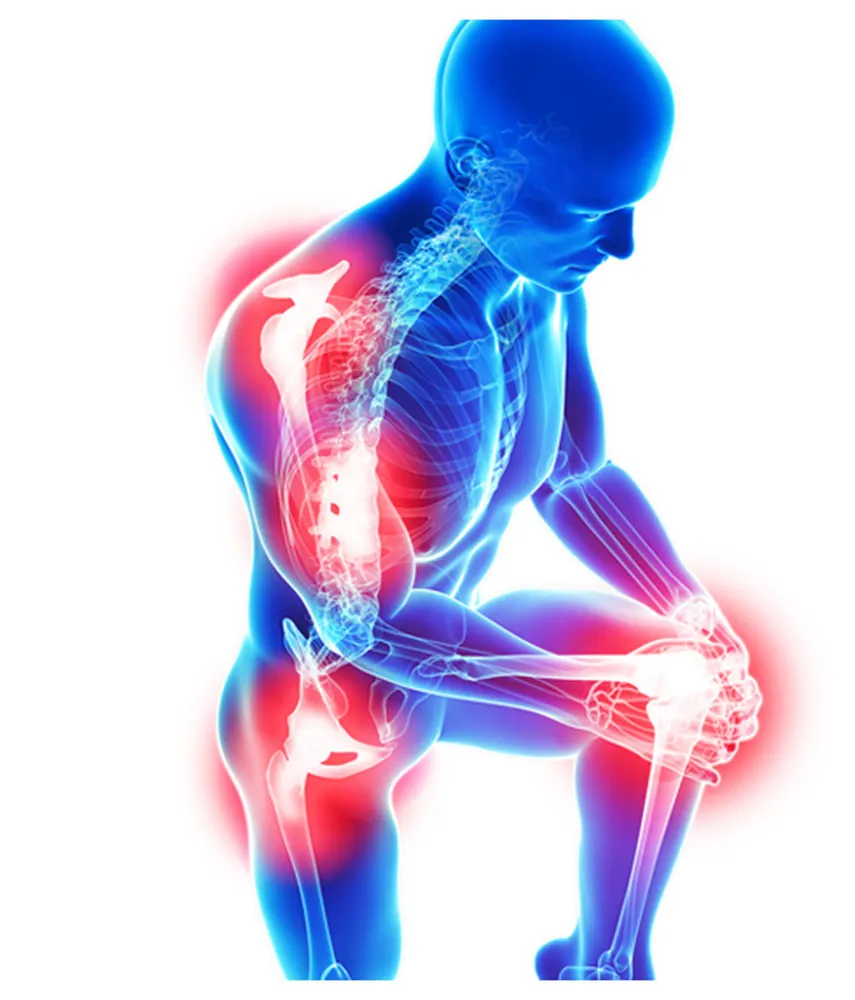Treating Shoulder Pain Without Surgery
The shoulder joint is vital for sports and daily activities, making it prone to chronic pain, especially in active individuals. Our specialists diagnose the cause and offer effective, non-surgical treatments for lasting relief.

Shoulder pain can arise from various conditions, including osteoarthritis, rotator cuff tears, labral tears, bursitis, and impingement syndrome. These issues often lead to pain, stiffness, weakness, and restricted mobility.
Early diagnosis through physical exams and imaging helps identify the underlying cause. Non-surgical treatments such as PRP, EMTT, MFAT, and laser therapy can effectively reduce pain, promote healing, and restore shoulder function.</p
Shoulder Osteoarthritis (OA)
Causes :
The most common cause of shoulder osteoarthritis is age-related wear and tear. Previous injuries such as fractures or dislocations can accelerate joint degeneration. Genetic factors and chronic inflammation may also contribute to cartilage breakdown, increasing the risk of osteoarthritis.
Symptoms :
- Persistent pain (dull or aching)
- Joint stiffness and reduced flexibility
- Swelling and inflammation
- Clicking or grinding sensations with movement
- Muscle weakness
Diagnosis :
A proper diagnosis involves a physical examination, symptom assessment, and imaging tests such as X-rays, ultrasound, or MRI to evaluate joint damage.

Shoulder Labral Tears
Causes :
Shoulder labral tears can result from trauma, such as falls, accidents, or direct impact. Repetitive overhead movements, common in athletes and manual laborers, can also lead to wear and tear. Shoulder dislocations may cause excessive force on the labrum, leading to damage. Additionally, aging and daily wear contribute to gradual degeneration, increasing the risk of a tear over time.
Symptoms :
- Pain – Especially with overhead movements or lifting
- Instability – A feeling of looseness in the shoulder
- Weakness – Reduced strength in the affected arm
- Limited range of motion – Difficulty moving the shoulder fully
- Clicking or popping – Unusual sounds or sensations
Diagnosis :
A healthcare provider will assess pain, range of motion, and stability through physical tests. Imaging techniques like ultrasound, X-ray, and MRI help confirm the diagnosis by providing detailed views of the labrum and surrounding structures

Rotator Cuff Tears
Causes :
Rotator cuff tears can occur due to sudden injury, repetitive strain, or age-related degeneration. Acute injuries, such as falls or heavy lifting, can cause immediate damage, while chronic overuse from repetitive motions—common in sports like tennis or swimming—can gradually weaken the tendons. Age-related wear and tear, along with bone spurs, can also contribute to tendon fraying and eventual tearing.
Symptoms :
- Pain when lifting or lowering the arm
- Weakness in the shoulder
- Difficulty lifting or rotating the arm
- Reduced range of motion
- A crackling or grinding sensation during movement
Diagnosis of Rotator Cuff Tears :
A comprehensive evaluation is essential for accurate diagnosis. This includes a detailed medical history, physical examination, and imaging tests such as ultrasound, X-rays, or MRI scans to assess the extent of the injury.
For those seeking effective, non-surgical solutions, our clinic offers advanced treatment options to promote healing and restore function.


